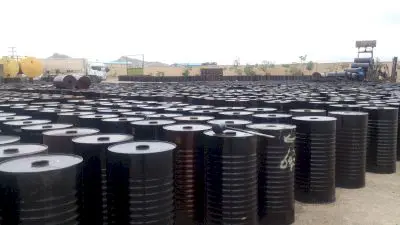Petroleum Prices in Georgia
Georgia is one of the countries on the border of Western Asia and Eastern Europe. According to the International Journal of Oil and Gas, there are over 6,000 petroleum products. The most important business sectors in Georgia are industrial, agriculture, tourism and construction. Meanwhile, the national companies distributing petroleum products in the Middle East, using the existing experts in the field
Add your import and export orders to this list
Warning: Undefined variable $formTitle in /home/anbar/domains/anbar.asia/anbar/inc/html/desktop/orderform.php on line 10
Warning: Undefined variable $marketName in /home/anbar/domains/anbar.asia/anbar/inc/html/desktop/orderform.php on line 12
Warning: Undefined variable $location in /home/anbar/domains/anbar.asia/anbar/inc/html/desktop/orderform.php on line 12
If you want to trade in the , please join in Anbar Asia. Your order will be shown here, so the traders of contact you

Georgia is a developing country with. Asphalt, which is used to make roads and roofs flat or impenetrable, is one of the most widely used petroleum products. Imports from Georgia to Iran are limited to certain products, one of the most important of which is the import of meat from Georgia. In principle, the applicant countries for the import and purchase of petroleum products in the Middle East
- Georgia Base Oil Market
- Georgia Engine Oil Market
- Georgia Bitumen Market
- Georgia Petroleum Coke Market
- Georgia Paraffin Market

In refineries, different parts of crude oil are separated and other usable products are introduced into production. According to the International Journal of Oil and Gas, there are over 6,000 petroleum products, most of which are used in our daily lives, and perhaps few people know about their relationship to oil.
Read More ...
The Achaemenid dynasty used bitumen for sealing and waterproofing the palace with the grandeur of Persepolis. Remains of it can be seen in the historical complex of Persepolis. Ancient Susa artists used a mixture of bitumen and heated it to obtain a composition that was very similar to stone. They used this material to make various objects as well as to make sculptures and fossils.
Read More ...
Petroleum coke (Petcoke) is the final carbon-rich solid material obtained from the oil refining process and is a group of fuels known as coke. Petroleum coke is specifically obtained from a final cracking process, which is considered a chemical engineering process, and the hydrocarbons of the oil chains are divided into shorter chains in a section called the coke unit.
Read More ...
Georgians speak Georgian. Georgia is one of the oldest and most original languages in the world, so it is said that this language can be considered one of the ten languages that humans first spoke. Their script is also derived from the originality of the language and is known as Georgian script.
Read More ...To view this page, please select a state: United States of Columbia Hampshire Jersey Mexico York Carolina Dakota Island Carolina Dakota Virginia . To view this page, please select a state: of Columbia Hampshire Jersey Mexico York Carolina Dakota Island Carolina Dakota Virginia . To view this page, please select a state or territory: of Columbia Hampshire Jersey Mexico York Carolina Dakota Island Carolina Dakota Virginia Samoa Mariana Islands Rico Virgin Islands . Overview Major highways and the world’s busiest airport help make Georgia eighth in the nation in transportation sector energy consumption. Major highways and the world’s busiest airport help make Georgia eighth in the nation in transportation sector energy consumption. Georgia is located at the southern end of the Blue Ridge Mountains and has the largest land area of any state east of the Mississippi River. Elevations in the state increase from sea level along Georgia's short Atlantic Coast to almost 5,000 feet in the mountains. Between the mountains and the sea are the rolling hills of the Piedmont region and Georgia's broad coastal plains. 1 Despite its location near the Appalachian coalfields and oil and natural gas basins, Georgia does not have any significant fossil fuel reserves. 5 Georgia leads the nation in commercial timberland and has many wood processing mills, wood-fueled power plants, and wood pellet manufacturers. 6,7,8 The Blue Ridge Mountains in the northwest corner of Georgia have only moderate wind energy potential, but the state's offshore waters have large areas with more substantial wind energy resources. 9 Most of Georgia's natural lakes are in the southern part of the state, while the larger, man-made lakes and reservoirs are concentrated in the river valleys of the north. 11,12 Nuclear power supplies slightly more than half of the primary energy produced in Georgia, and the rest comes from renewable resources. Major interstate highways and the world's busiest passenger airport in Atlanta help make Georgia eighth in the nation in transportation sector energy consumption, and the transportation sector accounts for the largest share of Georgia's end-use energy consumption. 15 Georgia has several industries, including the manufacture of food, beverages, and tobacco products; chemicals; and paper. 18 With Georgia's warm and humid climate, air conditioning is widely used, and the residential sector's per capita energy consumption is above the national average, although it is also less than in almost three-fifths of the states. 19,20,21 Overall, Georgia ranks among the top 10 states in the nation in total energy consumption, but per capita energy consumption is less than in nearly two-thirds of the states. Natural gas, nuclear power, and coal fuel more than nine-tenths of Georgia's electricity generation. 24 Coal-fired power plants fueled more than three-fifths of net generation in Georgia before 2009, but coal's contribution has declined steadily since then, and coal fueled about one-fifth of state generation in 2019. 25 More than 4,000 megawatts of coal-fired capacity have been retired in Georgia in the past decade, and almost 2,500 megawatts of natural gas-fired capacity were added in the same period. Two nuclear reactors under construction at Georgia’s Vogtle nuclear plant will almost double the plant’s generating capacity. Georgia is among the top 10 nuclear power generators in the nation. 28 The state's two nuclear power plants, both located in eastern Georgia, typically provide about one-fourth of the state's net generation. 29,30,31 Two new reactors under construction at the existing Vogtle nuclear plant in Waynesboro, Georgia, will almost double the plant's generating capacity. 3% of Georgia's power is fueled by petroleum liquids and petroleum coke. Although Georgia is among the top 10 states, the state typically uses more power than it generates. For the past decade, Georgia has acquired more than 10% of the electricity it consumes each year from other states. 35,36 The residential sector, where nearly three-fifths of the state's households use electricity for heating and almost all homes have air conditioning, accounts for slightly more than two-fifths of electricity retail sales in Georgia. 39 Georgia is one of the top states in the number of plug-in electric vehicles per capita. Georgia is the leader in electricity generation from wood and wood-derived fuels. Renewable resources fuel nearly 9% of Georgia's electricity generation, and about half of that generation comes from biomass, primarily wood and wood-derived fuels. 42,43 More than 24 million acres of Georgia's almost 25 million acres of forest are available for commercial use, and there are more than 200 wood product manufacturing plants in the state, including 7 wood pellet manufacturing plants that have a combined production capacity of more than 1. 44,45,46 Georgia is a leading wood pellet exporter. Georgia is one of the 10 largest hydroelectric power producers east of the Rocky Mountains, and is the 14th largest producer of in the nation as a whole. 50,51 In total, there are 31 hydroelectric power plants in Georgia, including 4 hydroelectric pumped storage facilities. Solar energy provided 2% of Georgia's in-state electricity, all of it from solar photovoltaics (PV) and most of it from utility-scale facilities with greater than 1 megawatt of capacity. 54 By the end of 2019, Georgia had more than 1,500 megawatts of utility-scale solar PV capacity. Georgia has no utility-scale wind-powered electricity generation. However, Georgia does have offshore wind resources along its 100-mile Atlantic coastline. There are three biodiesel plants with a combined production capacity of 19 million gallons of biodiesel per year in Georgia, almost twice as much as is consumed in the state. 61,62 Georgia also has one fuel ethanol plant that can produce 119 million gallons of ethanol per year. 63 Most motor gasoline sold in the United States is blended with at least 10% ethanol, and a large amount of ethanol is used in Georgia's transportation sector. Georgia does not have a renewable energy portfolio standard, nor does it have a voluntary renewable energy target. 69 In 2001, Georgia enacted a law that allowed, but did not require, utilities to offer net metering. Georgia does not have any crude oil production or proved petroleum reserves. 74,75 Georgia has no petroleum refineries. 76,77 No crude oil pipelines cross Georgia, but the state receives refined petroleum products from two interstate petroleum product pipeline systems and an interstate propane pipeline. 78 The Port of Savannah also receives petroleum product imports from around the world. Petroleum accounts for the largest share of energy consumed in Georgia. The state ranks among the top 10 states in total petroleum consumption, but it is among the 10 lowest in per capita petroleum consumption. 80,81 The transportation sector accounts for almost nine-tenths of the state's petroleum use, most of it as motor gasoline. To minimize formation of ozone, motor gasoline sold during the summer months in 13 counties in northwestern Georgia, including the Atlanta metropolitan area, had to sell fuel with a lower volatility than the motor gasoline sold in the rest of the state. 83 Much of the rest of the petroleum used in Georgia is consumed as distillate fuel oil or jet fuel, which are also used in the transportation sector. 84 The industrial sector is the second-largest petroleum consumer in Georgia but uses less than one-tenth of the petroleum consumed in the state. The commercial sector uses about 3% and the rest is consumed in the residential sector, where about 1 in 20 households heat with petroleum products, mostly propane. Georgia does not have any natural gas proved reserves or production. 87,88 However, there has been some recent interest in exploring for natural gas in shale formations in northern Georgia. 89 Georgia receives the natural gas it needs from other states by pipeline and from other countries through the Elba Island liquefied natural gas (LNG) import terminal. About half of the natural gas that enters Georgia is sent on to South Carolina and Florida. Georgia’s Elba Island LNG import terminal added LNG export facilities that began operations in 2020. natural gas production has increased, Georgia import volumes have decreased from a high of more than 170 billion cubic feet in 2007 to less than 6 billion cubic feet in 2019. Georgia consumes more natural gas than two-thirds of the states, but its per capita consumption is less than in about two-thirds of the states. 94 In the past decade, the amount of natural gas used by the state's electric power sector has increased, and that sector is now the largest consumer of natural gas in Georgia and receives more than half of the natural gas delivered to consumers. The residential sector, where two of every five Georgia households use natural gas for home heating, consumes about one-sixth. Georgia has no active coal mines and only minor estimated recoverable coal reserves. Coal was mined on a small scale in Georgia as early as the 1830s, but production ended in the mid-1980s. 103 Coal consumption in Georgia declined from more than 34 million tons in 2010 to less than 14 million tons of coal annually in 2019. About 2% of the coal consumed in Georgia is delivered to industrial facilities 104 Coal from Wyoming, Illinois, and a few other states is delivered to Georgia's three coal-fired power plants. 1 NETSTATE, Georgia, The Geography of Georgia, updated February 25, 2016. 5 Georgia Forestry Commission, Georgia Forest Facts, accessed September 28, 2020. 6 Georgia Department of Economic Development, Georgia Energy Industry Overview (February 22, 2011), p. EIA, Electricity, Form EIA-860 detailed data with previous form data 2019 Form EIA-860 Data, Schedule 3, 'Generator Data' (Operable Units Only), Georgia, Wood/Wood Waste Biomass. Department of Energy, Energy Efficiency and Renewable Energy, WINDExchange, Wind Energy in Georgia, accessed September 28, 2020. , New Georgia Encyclopedia, Geography & Environment, Conservation & Management, Reservoirs, updated September 3, 2019. Bureau of Economic Analysis, Regional Data, Interactive Data, GDP & Personal Income, Annual Gross Domestic Product (GDP) by State, GDP in Current Dollars, Georgia, All statistics in table, 2017. 19 Knox, Pam, "Georgia's Climate Is Peachy!" The CoCoRaHS, ‘State Climates' Series, accessed September 29, 2020. EIA, Electricity Data Browser, Net generation all sectors, Georgia, Fuel Type (Check all), Annual, 2019. EIA, Electricity Data Browser, Net generation all sectors, Georgia, All fuels, Coal, Annual, 2001-19. EIA, Electricity Data Browser, Net generation all sectors, Georgia, All fuels, Natural gas, Annual, 2001-19. EIA, Georgia Profile Overview, Nuclear Power Plant Map Layer, accessed October 2, 2020. Nuclear Regulatory Commission, Georgia, updated October 5, 2016. EIA, Electricity Data Browser, Net generation all sectors, Georgia, All fuels, Nuclear, Annual, 2001-19. 33 Georgia Power, Vogtle News, accessed November 10, 2020. EIA, Electricity Data Browser, Net generation all sectors, Georgia, Fuel Type (Check all), Annual, 2019. EIA, Georgia Electricity Profile 2018, Table 10, Supply and disposition of electricity, 1990 through 2018. Census Bureau, Georgia, Table B25040, House Heating Fuel, 2019 American Community Survey 1-Year Estimates. EIA, Electricity Data Browser, Net generation all sectors, Georgia, Fuel Type (Check all), Annual, 2019. 44 The Economics of Forestry, Georgia Forest Facts, accessed October 3, 2020. 45 Georgia Forestry Commission, Forest Industry, accessed October 3, 2020. 47 Georgia Forestry Commission, Georgia Forest Products Exports, 2019. 48 Echols, Tim, "Commentary: Georgia's Wood Pellet Exports Fuel British Global Atlanta (August 8, 2016). , and Gretchen Loeffler, "River Basins," New Georgia Encyclopedia, Geography & Environment, updated December 10, 2019. , "Reservoirs," New Georgia Encyclopedia, Geography & Environment, updated September 3, 2019. EIA, Electricity Data Browser, Net generation all sectors, Georgia, Fuel Type (Check all), Annual, 2019. EIA, Electricity Browser, Net generation, Georgia, All Solar, Small-scale solar photovoltaic, All utility-scale solar, 2016-19. EIA, Electricity Browser, Net generation, Georgia, Wind, Monthly, 2019-20. Department of Energy, Energy Efficiency and Renewable Energy, WINDExchange, Wind Energy in Georgia, Georgia Offshore 90-Meter Wind Map and Wind Resource Potential, accessed October 9, 2020. 60 Georgia Department of Economic Development, Georgia Energy Industry Overview (February 22, 2011), p. 69 NC Clean Energy Technology Center, DSIRE, Georgia, Programs, accessed October 11, 2020. 70 NC Clean Energy Technology Center, DSIRE, Georgia, Net Metering, updated July 2, 2020. , and Andrea Gernazian, Petroleum Exploration Wells in Georgia, Georgia Department of Natural Resources, Georgia Geologic Survey Information Circular 51 (1979), p. 75 Georgia Department of Natural Resources, Environmental Protection Division, Georgia Geologic Survey Information Circulars, IC-77, Petroleum Exploration Wells in Georgia, 1979-1984 (1988). EIA, Number and Capacity of Petroleum Refineries, Georgia, Annual (as of January 1), 2015-20. EIA, Georgia Profile Overview, Crude Oil, Refined Product, and HGL Pipeline Map Layers, accessed October 12, 2020. EIA, Petroleum and Other Liquids, Company Level Imports, July 2020, Excel File. EIA, State Energy Data System, Table C15, Petroleum Consumption, Total and per Capita, Ranked by State, 2018. EIA, State Energy Data System, Table F16, Total Petroleum Consumption Estimates, 2018. Census Bureau, Georgia, Table B25040, House Heating Fuel, 2019 American Community Survey 1-Year Estimates. 89 Southern Environmental Law Center, Georgia passes modern-day fracking protections into law (May 11, 2018). EIA, International and Interstate Movements of Natural Gas by State, Georgia, Annual, 2014-19. EIA, Georgia Natural Gas International Receipts, 1967-2019. EIA, Georgia Natural Gas Deliveries to Electric Power Consumers, 1997-2019. EIA, Natural Gas Consumption by End Use, Georgia, Annual, 2014-19. Census Bureau, Georgia, Table B25040, House Heating Fuel, 2019 American Community Survey 1-Year Estimates. 98 Knox, Pam, "Georgia's Climate is Peachy!" The CoCoRaHS ‘State Climates' Series, accessed October 11, 2020. EIA, Natural Gas Consumption by End Use, Georgia, Annual, 2014-19. Department of the Interior, Office of Surface Mining Reclamation and Enforcement, Appalachian Region, Georgia, updated September 11, 2019. EIA, Coal Data Browser, Total Consumption, Georgia, 2001-19. EIA, Annual Coal Distribution Report 2018 (October 2019), By Coal Destination State, Georgia, Table DS-9, Domestic Coal Distribution, by Destination State, 2018.
Read More ...
Browse Research Asia Georgia All Categories Heavy Industry Energy & Resources Energy Petroleum Region: Petroleum . petroleum products in Georgia. to the terms which govern investment into Georgia’s upstream oil and gas sector. Georgia. most up-to-date industry data on the actual market situation, and future outlook for oil and gasoline additives in Georgia. The "MoENR – Poti Oil Refinery – Georgia - .
Read More ...
Iran is planning to get a share of Georgia’s oil byproduct market and open a new gateway to Europe. “Georgia can be an export gateway to Europe,” Amir Vakilzadeh, director of import and export at the National Iranian Oil Products Distribution Company, was quoted as saying by Shana. He added that negotiations with Armenia and Georgia on the export of petroleum products are on the NIOPDC list of priorities. Vakilzadeh noted that Iran has been in talks with Armenia to access Georgia’s market, as the former shares a border with Iran. Expressing satisfaction with talks underway, the official said Georgia is interested in Iran's oil products and it can be a lucrative market. “The cost of exporting petroleum products via land are higher than sea.
Read More ...
Refined Petroleum Product Market in Georgia to 2022The report Refined Petroleum Product Market in Georgia to 2022 offers the most up-to-date industry data on the actual market situation, and future outlook for refined petroleum products in Georgia. The report helps answer the following questions: What is the size of the refined petroleum product market in Georgia? How much refined petroleum products are produced in Georgia? How is the market split into different types of refined petroleum products? How are the overall market and different product types growing? How is the market predicted to develop in the future?The latest industry data included in this report: Demand for refined petroleum products, 2011-2022 Production of refined petroleum products, 2011-2022 Refined petroleum product market size by product type, 2011-2022 Growth rates of the overall market and different product segments, 2011-2022 Shares of different product segments of the overall market, 2011, 2017, and 2022The market data is given for the following product oils and bituminous mineral butylene, butadiene, ethylene and liquefied petroleum gases and gaseous petroleum gases and gaseous jellyOther mineral petroleum cokeNot calcined petroleum residues of petroleum oilsAmong the key reasons to purchase include the following: Gain an outlook of the historical development, current market situation, and future outlook of the refined petroleum product market in Georgia to 2022 Track industry developments and identify market opportunities Plan and develop marketing, market-entry, market expansion, and other business strategies by identifying the key market opportunities and prospects Save time and money with the readily accessible key market data included in this PDF format industry report. Overall Refined Petroleum Products Market in Georgia Demand Production Market by Type Petroleum oils and bituminous mineral oils Liquefied butanes Liquefied propane Liquefied butylene, butadiene, ethylene and propylene Other liquefied petroleum gases and gaseous hydrocarbons Other petroleum gases and gaseous hydrocarbons Paraffin wax Petroleum jelly Other mineral waxes Calcined petroleum coke Not calcined petroleum coke Petroleum bitumen Other residues of petroleum oils2. About Global Research & Data Services List of TablesTable 1 Demand for refined petroleum products in Georgia, 2011-2022 (US dollars) Table 2 Production of refined petroleum products in Georgia, 2011-2022 (US dollars) Table 3 Demand for refined petroleum products in Georgia, by type, 2011, 2017 and 2022 (share) Table 4 Demand for petroleum oils and bituminous mineral oils in Georgia, 2011-2022 (US dollars) Table 5 Demand for liquefied butanes in Georgia, 2011-2022 (US dollars) Table 6 Demand for liquefied propane in Georgia, 2011-2022 (US dollars) Table 7 Demand for liquefied butylene, butadiene, ethylene and propylene in Georgia, 2011-2022 (US dollars) Table 8 Demand for other liquefied petroleum gases and gaseous hydrocarbons in Georgia, 2011-2022 (US dollars) Table 9 Demand for other petroleum gases and gaseous hydrocarbons in Georgia, 2011-2022 (US dollars) Table 10 Demand for paraffin wax in Georgia, 2011-2022 (US dollars) Table 11 Demand for petroleum jelly in Georgia, 2011-2022 (US dollars) Table 12 Demand for other mineral waxes in Georgia, 2011-2022 (US dollars) Table 13 Demand for calcined petroleum coke in Georgia, 2011-2022 (US dollars) Table 14 Demand for not calcined petroleum coke in Georgia, 2011-2022 (US dollars) Table 15 Demand for petroleum bitumen in Georgia, 2011-2022 (US dollars) Table 16 Demand for other residues of petroleum oils in Georgia, 2011-2022 (US dollars) List of GraphsGraph 1 Demand for refined petroleum products in Georgia, 2011-2022 (US dollars)Graph 2 Production of refined petroleum products in Georgia, 2011-2022 (US dollars)Graph 3 Demand for petroleum oils and bituminous mineral oils in Georgia, 2011-2022 (US dollars)Graph 4 Demand for liquefied butanes in Georgia, 2011-2022 (US dollars)Graph 5 Demand for liquefied propane in Georgia, 2011-2022 (US dollars)Graph 6 Demand for liquefied butylene, butadiene, ethylene and propylene in Georgia, 2011-2022 (US dollars)Graph 7 Demand for other liquefied petroleum gases and gaseous hydrocarbons in Georgia, 2011-2022 (US dollars)Graph 8 Demand for other petroleum gases and gaseous hydrocarbons in Georgia, 2011-2022 (US dollars)Graph 9 Demand for paraffin wax in Georgia, 2011-2022 (US dollars)Graph 10 Demand for petroleum jelly in Georgia, 2011-2022 (US dollars)Graph 11 Demand for other mineral waxes in Georgia, 2011-2022 (US dollars)Graph 12 Demand for calcined petroleum coke in Georgia, 2011-2022 (US dollars)Graph 13 Demand for not calcined petroleum coke in Georgia, 2011-2022 (US dollars)Graph 14 Demand for petroleum bitumen in Georgia, 2011-2022 (US dollars)Graph 15 Demand for other residues of petroleum oils in Georgia, 2011-2022 (US dollars).
https://www.wm-strategy.com/georgia-petrol-fuel-markethttps://www.marketresearch.com/seek/Petroleum-Georgia/379/1222/1.html
https://www.eia.gov/state/analysis.php?sid=GA

